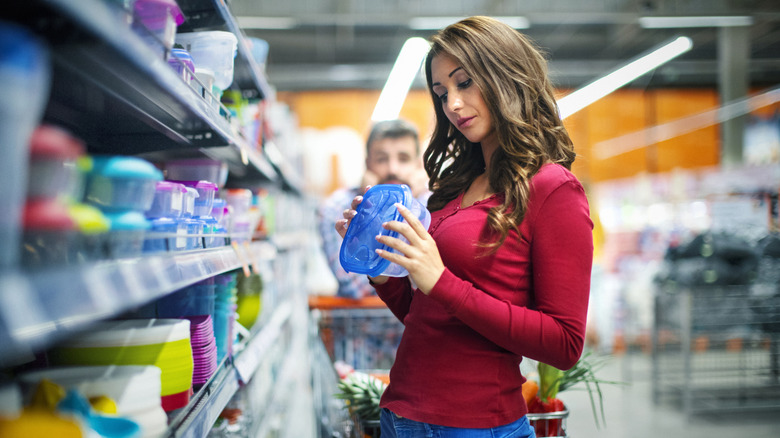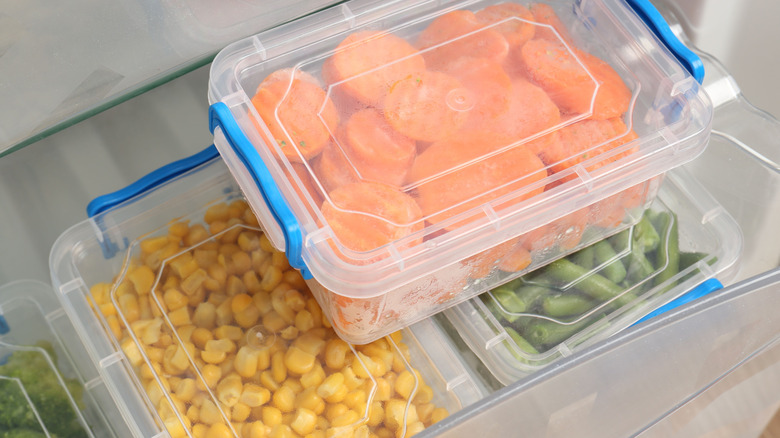The Two-Letter Code That Tells You If The Plastic Container You're Eyeing Is Actually Safe
As we constantly consume doomsday media about microplastics, carcinogens, BPA, and other forever chemicals, the plastic in our lives becomes a scary concept. Scarier yet, is when we encounter them in our kitchen. Plastics are everywhere in our modern world and it is vital to know when they are safe to use. When it comes to food, check the code on the bottom – plastics are labeled for your convenience. For food-safe plastics, polypropylene and polyethylene, look for labels with PP and PE, respectively.
Also check for their corresponding numerical labels in the small triangle on the bottom of a container. Polypropylene is labeled with a 5, while polyethylene makes up products labeled 1, 2, and 4. Products labeled with a 3, 6, or 7 should be avoided when working with food. Even outside the kitchen, there are some items that should never be stored in plastic containers for their own protection. Plastic is incredibly common in our world, but knowing the rules can keep things safe and ordered.
Using PP and PE plastics
While generally considered safe, there are things to note when using plastics with food. Not all plastics are reusable, and it's important to know when to throw away your plastic storage containers to maintain food safety standards. Polyethylene comes in multiple forms: high-density polyethylene (HDPE, labeled 2), low-density polyethylene (LDPE, labeled 4), and polyethylene terephthalate (PET, labeled 1). HDPE, found in jugs or plastic bags, and LDPE, found in shrink wrap or bread bags, can be reusable. PET is commonly used in water bottles or condiment containers and is not considered reusable. It's important to follow these standards to prevent chemicals from leaching.
Polypropylene is an FDA-approved, BPA-free material that is not considered carcinogenic. It has a high resistance to heat, making it microwavable or reusable. Polypropylene is often used for medicine and dairy-product containers.
Understanding the standards of use for PP and PE products can protect you and your family from using harmful plastics in your kitchen. Appropriate plastic storage boxes can add value to your kitchen storage, offering flood protection and deterring rodents and insects. That said, if the plastic remains a concern, you could always swap some plastic kitchen items for safer alternatives.

